ChatGPT:
Origins and Early History
The earliest recorded mention of Dresden dates back to 1206, in a document that references “Dresdene,” derived from the Old Sorbian word Drežďany, meaning “people of the forest.” Originally a small fishing village inhabited by Slavic settlers, Dresden began to gain prominence due to its strategic location on trade routes along the Elbe River.
In the 13th and 14th centuries, Dresden evolved into a significant market town. Its incorporation into the Margraviate of Meissen in the 15th century marked the beginning of its rise as a political and economic center. The Wettin dynasty, which ruled Saxony for centuries, established Dresden as their seat of power, further elevating the city’s status.
Renaissance and Baroque Flourish
The 16th and 17th centuries witnessed Dresden’s transformation into a hub of art and culture. Elector Augustus the Strong (1694–1733) and his son Augustus III were instrumental in shaping the city’s Baroque character. Under their patronage, Dresden blossomed into a center of European arts, architecture, and music.
- Architectural Marvels: The city’s skyline was adorned with masterpieces like the Zwinger Palace, a Baroque complex housing art galleries and museums; the Frauenkirche (Church of Our Lady), an iconic Lutheran church; the Semperoper, an opera house renowned for its acoustics and design; and the Dresden Castle, the royal residence of Saxon kings.
- Cultural Institutions: Dresden amassed significant art collections, including the Old Masters Picture Gallery, featuring works by Raphael, Titian, and Rembrandt, and the Green Vault, one of the oldest museums in Europe, showcasing treasures and jewels.
19th Century and Industrialization
The 19th century brought industrial growth, making Dresden a center for manufacturing and innovation. Industries such as mechanical engineering, pharmaceuticals, and camera production flourished.
- Transportation Hub: The development of railways and steamships enhanced Dresden’s connectivity, boosting trade and commerce.
- Scientific Advancements: The city became home to leading scientific minds and institutions, contributing to fields like physics, chemistry, and engineering.
World War II and Destruction
In February 1945, during the final months of World War II, Dresden was subjected to intense Allied bombing raids. The attacks resulted in a firestorm that devastated much of the historic city center.
- Human and Cultural Loss: An estimated 25,000 people lost their lives, and countless cultural artifacts were destroyed. The bombings sparked controversy and debate over the necessity and morality of targeting a city with limited military significance.
Post-War Reconstruction and the GDR Era
After the war, Dresden became part of the German Democratic Republic (East Germany).
- Reconstruction Efforts: The city’s rebuilding was slow and influenced by socialist architectural styles. While some historic structures were restored, many remained in ruins due to economic constraints and political priorities.
- Cultural Preservation: Efforts were made to salvage and restore key monuments, but the overall urban landscape changed significantly during this period.
Reunification and Modern Development
Following the fall of the Berlin Wall in 1989 and German reunification in 1990, Dresden embarked on extensive restoration and modernization.
- Reconstruction of Landmarks: A major milestone was the rebuilding of the Frauenkirche, completed in 2005. Using original plans and recovered stones, the church was restored as a symbol of reconciliation and renewal.
- Economic Revitalization: Investments poured into technology, education, and infrastructure. Dresden emerged as part of “Silicon Saxony,” Europe’s largest microelectronics cluster.
- Tourism and Culture: The city re-established itself as a major tourist destination, attracting visitors with its blend of historical sites and modern amenities.
Cultural and Educational Significance
- Arts and Festivals: Dresden hosts numerous cultural events, including the Dresden Music Festival, showcasing classical and contemporary performances.
- Educational Institutions: The Technische Universität Dresden is one of Germany’s leading universities, fostering research and innovation.
- Museums and Galleries: The city boasts an array of museums, such as the Albertinum and the Military History Museum, enriching its cultural landscape.
Current Status
As of my knowledge cutoff in October 2023, Dresden is a vibrant city with a population exceeding 550,000.
- Economy: The city’s economy thrives on technology, semiconductor manufacturing, biotechnology, and tourism.
- Urban Development: Dresden continues to balance preservation with progress, integrating modern architecture alongside restored historical buildings.
- Environmental Initiatives: Efforts are underway to promote sustainable development, with projects focusing on green spaces and the preservation of the Elbe Valley.
Conclusion
Dresden’s journey from a medieval settlement to a modern metropolis reflects a tapestry of cultural richness, resilience, and innovation. The city’s ability to rebuild and reinvent itself after profound destruction stands as a testament to its enduring spirit. Today, Dresden not only honors its past through meticulous restoration but also looks to the future as a center of science, technology, and the arts.
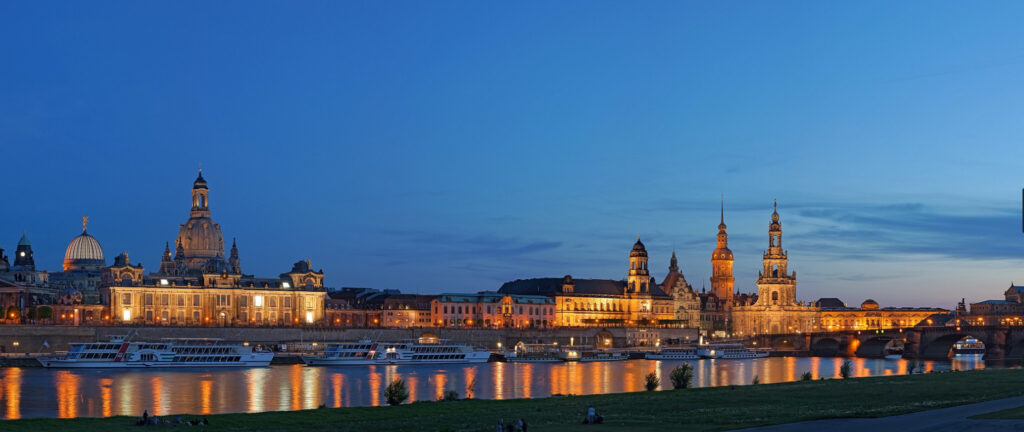
Historical Monuments and Tourist Attractions in Dresden
Dresden, known for its rich cultural heritage and architectural splendor, offers a plethora of historical monuments and attractions. Below is a list of notable sites that showcase the city’s artistic, historical, and natural beauty.
1. Frauenkirche (Church of Our Lady)
A symbol of reconciliation and peace, this Baroque Lutheran church was reconstructed after its destruction in World War II. Its grand dome offers panoramic views of the city.
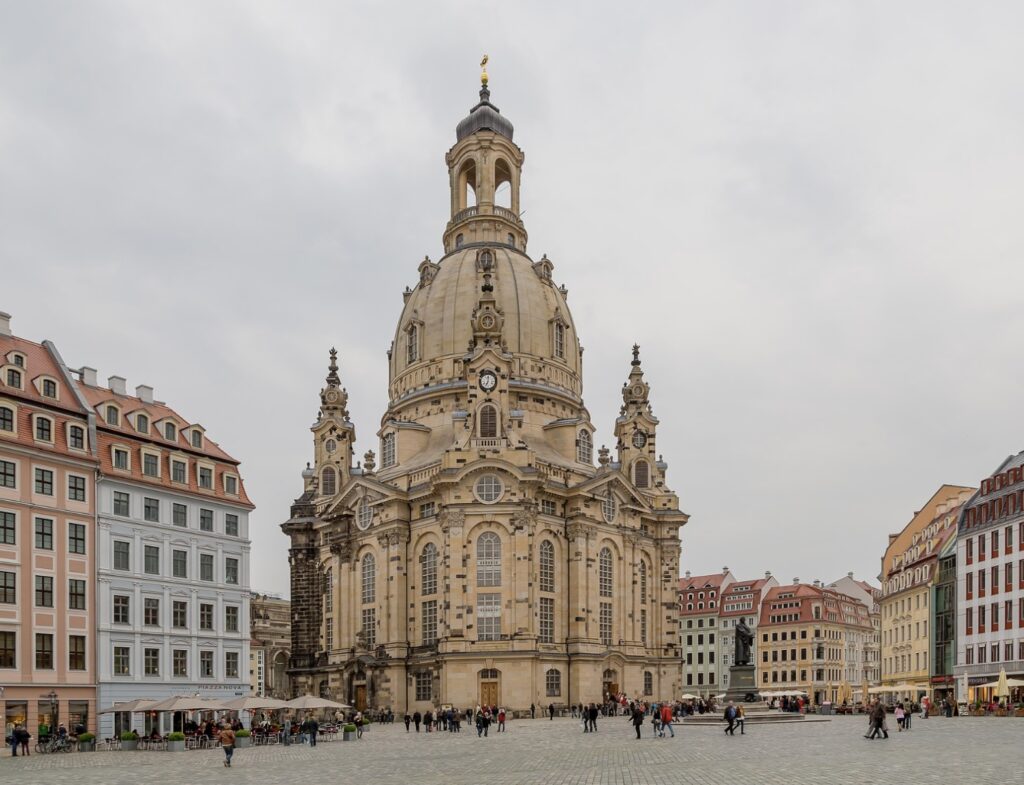
2. Zwinger Palace
An exquisite example of Baroque architecture, the Zwinger houses several museums, including the Old Masters Picture Gallery, which features works by Raphael, Titian, and Rembrandt.
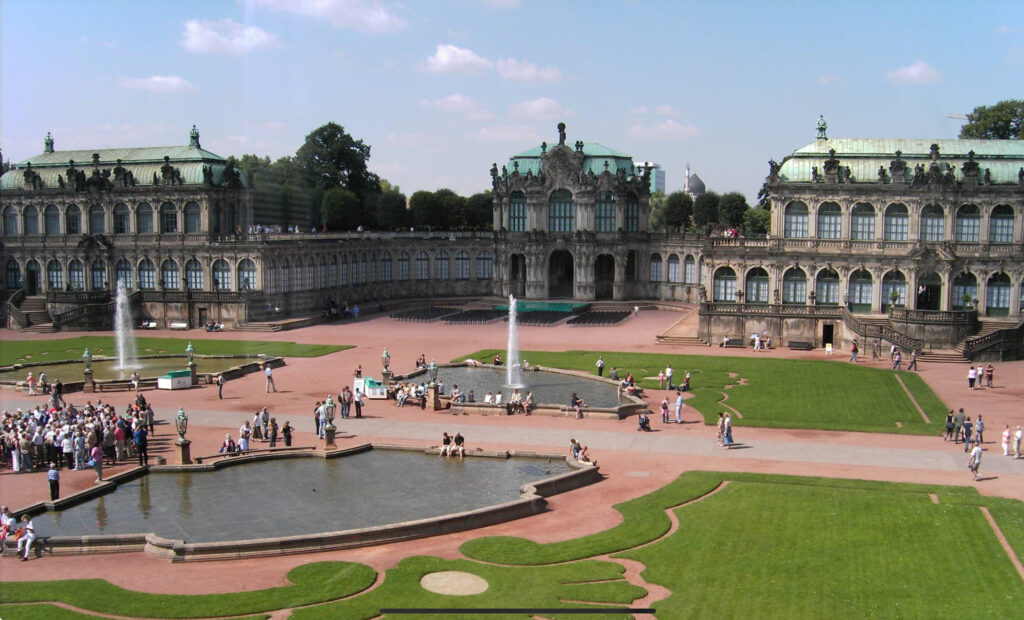
3. Semperoper (Semper Opera House)
Renowned for its architectural beauty and acoustics, the opera house hosts performances of opera, ballet, and concerts by the Saxon State Orchestra.
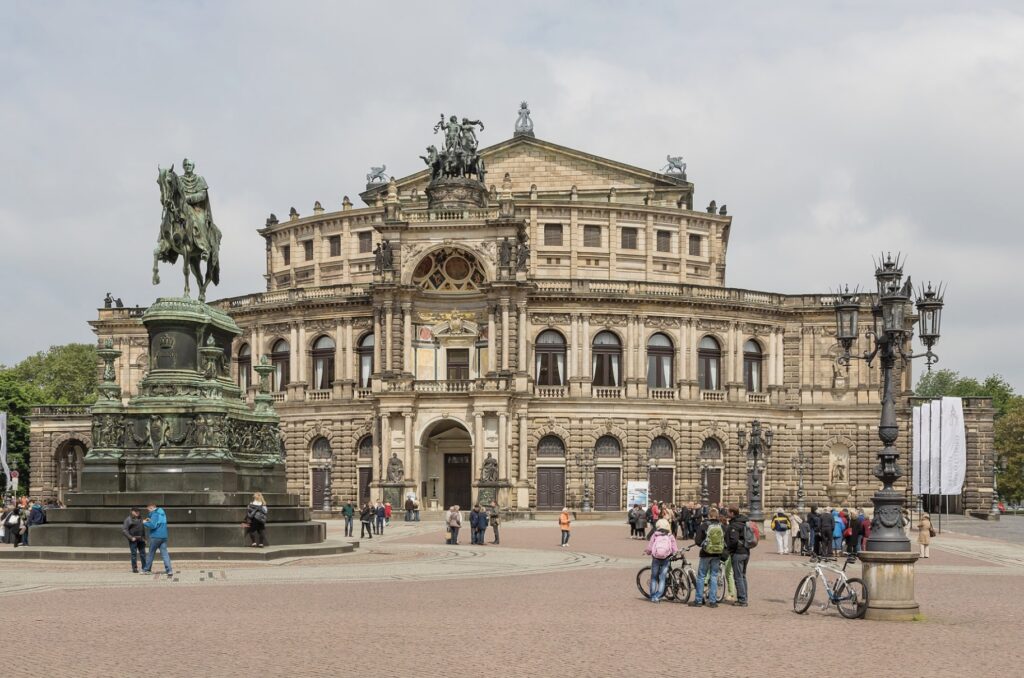
4. Dresden Castle (Residenzschloss)
Once the royal palace of the Saxon kings, it now contains several museums such as the Green Vault (Grünes Gewölbe), showcasing a vast collection of treasures and jewels.
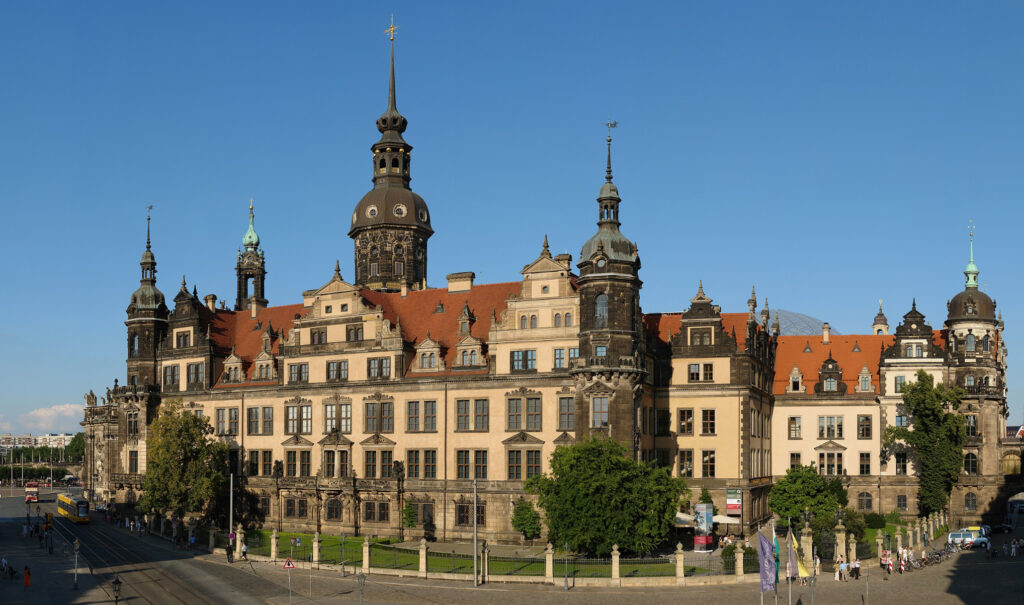
5. Brühl’s Terrace (Brühlsche Terrasse)
Often called the “Balcony of Europe,” this terrace offers stunning views of the Elbe River and is lined with historic buildings and sculptures.
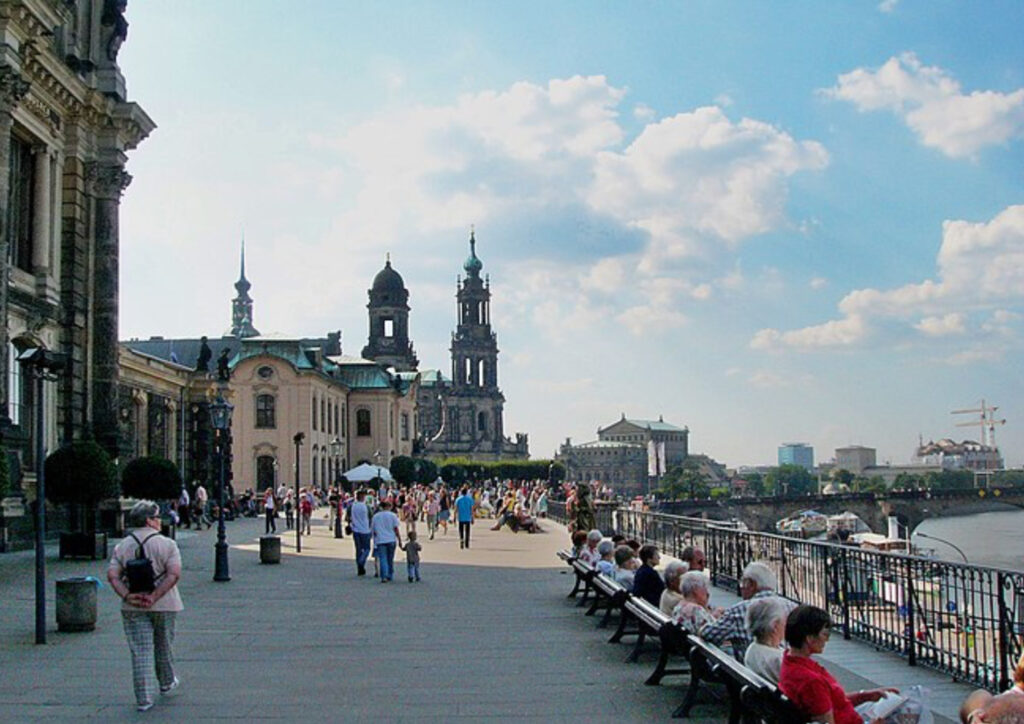
6. Procession of Princes (Fürstenzug)
A large mural made from Meissen porcelain tiles, depicting the history of Saxon rulers. It’s one of the largest porcelain artworks in the world.
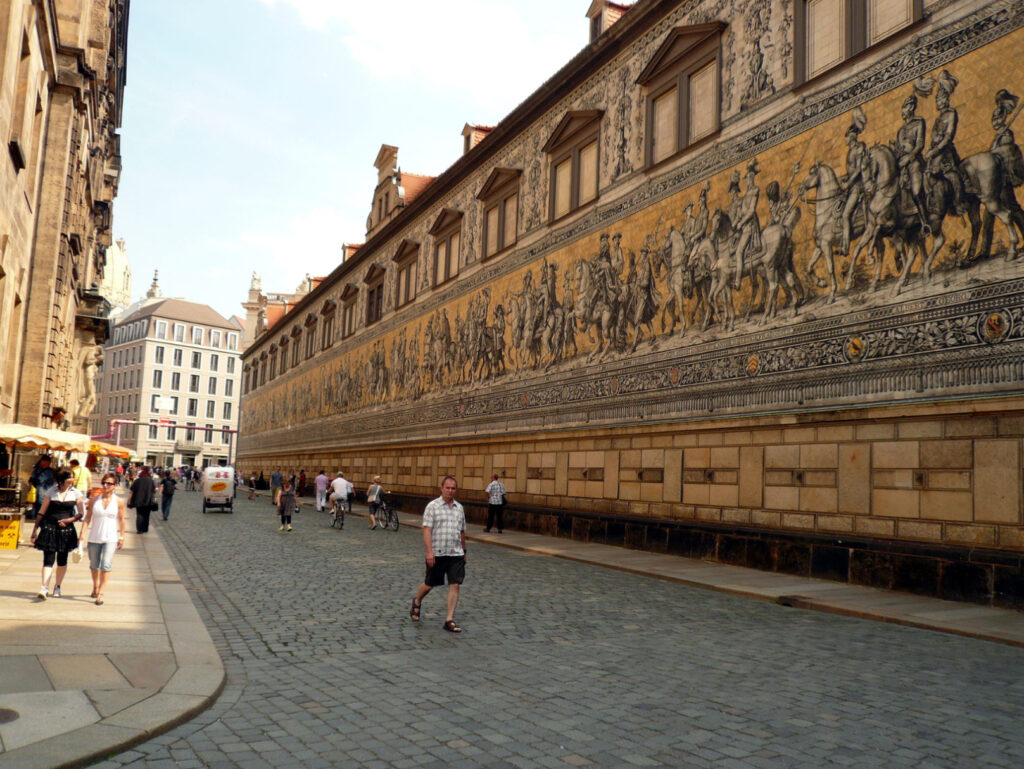
7. Dresden Cathedral (Katholische Hofkirche)
The largest church in Saxony, this Catholic cathedral features impressive architecture and houses the burial site of many members of the Wettin dynasty.
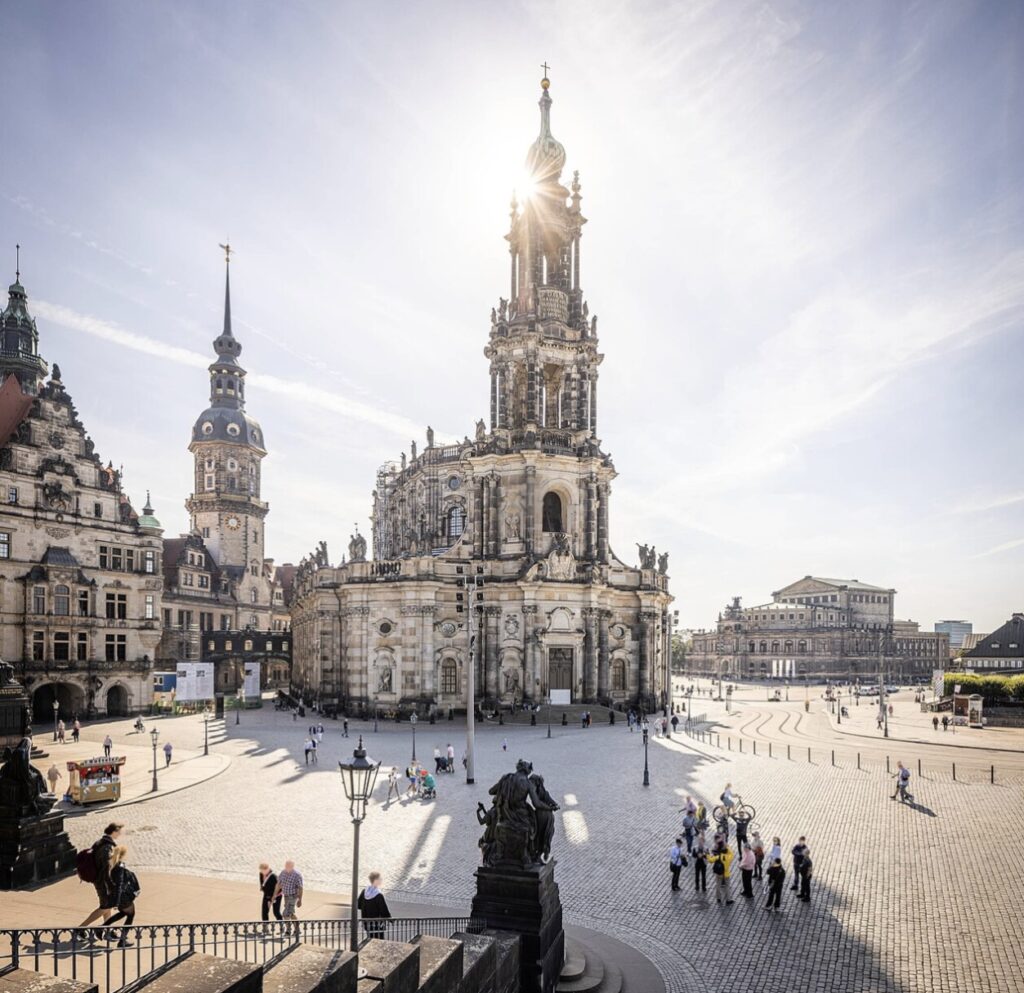
8. Albertinum
A museum dedicated to modern art, hosting the New Masters Gallery and the Sculpture Collection, with works ranging from Romanticism to the present.

9. Pillnitz Castle and Park
A restored Baroque palace located along the Elbe River, surrounded by extensive gardens and parks, reflecting Chinese and English architectural influences.
10. Blue Wonder Bridge (Loschwitzer Brücke)
An engineering marvel of its time, this steel bridge connects the districts of Blasewitz and Loschwitz and is a popular photo spot.
11. Grosser Garten (Great Garden)
Dresden’s largest park, featuring the Palais Grosser Garten, a miniature railway, and the Dresden Zoo.
12. Military History Museum (Militärhistorisches Museum der Bundeswehr)
Offers insights into German military history with exhibits spanning several centuries, housed in a building redesigned by architect Daniel Libeskind.
13. Japanese Palace (Japanisches Palais)
An 18th-century palace initially intended to house a porcelain collection, now hosting various museums and cultural events.
14. Kunsthofpassage
An artistic courtyard complex in the Neustadt district, known for its creative façades, art installations, and boutique shops.
15. Panometer Dresden
A former gasometer transformed into a 360-degree panoramic experience, depicting historical scenes of Dresden.
16. Transparent Factory (Gläserne Manufaktur)
A Volkswagen manufacturing plant made of glass, offering tours that showcase the production of electric vehicles.
17. Dresden Transport Museum (Verkehrsmuseum Dresden)
Exhibits the history of transportation with collections of vehicles, aircraft, and ships.
18. Neustadt District
A vibrant area north of the Elbe River, known for its Baroque quarter, lively nightlife, street art, and eclectic dining options.
19. Elbe River Cruises
Boat tours along the Elbe River provide scenic views of Dresden’s skyline and surrounding landscapes, including trips to the Saxon Switzerland National Park.
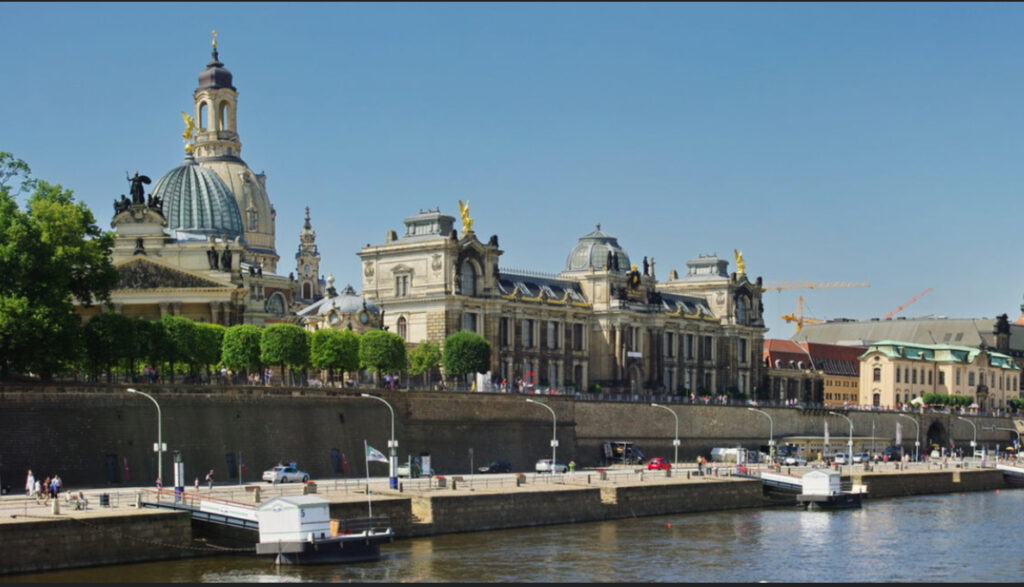
20. Museum of Decorative Arts (Kunstgewerbemuseum)
Located in the Pillnitz Castle, it showcases a vast collection of crafts, design, and applied arts from the Middle Ages to the present.
Additional Attractions:
- Dresden Botanical Garden: Features a diverse collection of plants from various climatic regions.
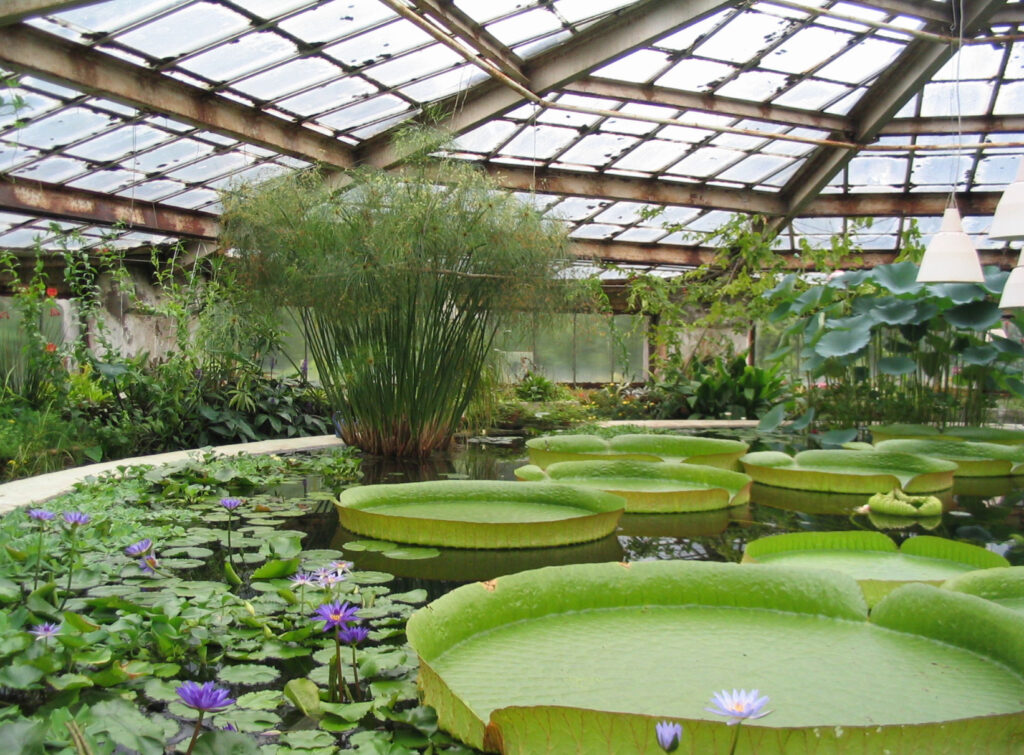
- Erich Kästner Museum: Dedicated to the life and work of the famous German author born in Dresden.
- City Museum of Dresden (Stadtmuseum Dresden): Chronicles the city’s history through artifacts and exhibits.
- Yenidze: A former tobacco factory designed in the style of a mosque, now housing offices and a restaurant with panoramic views.
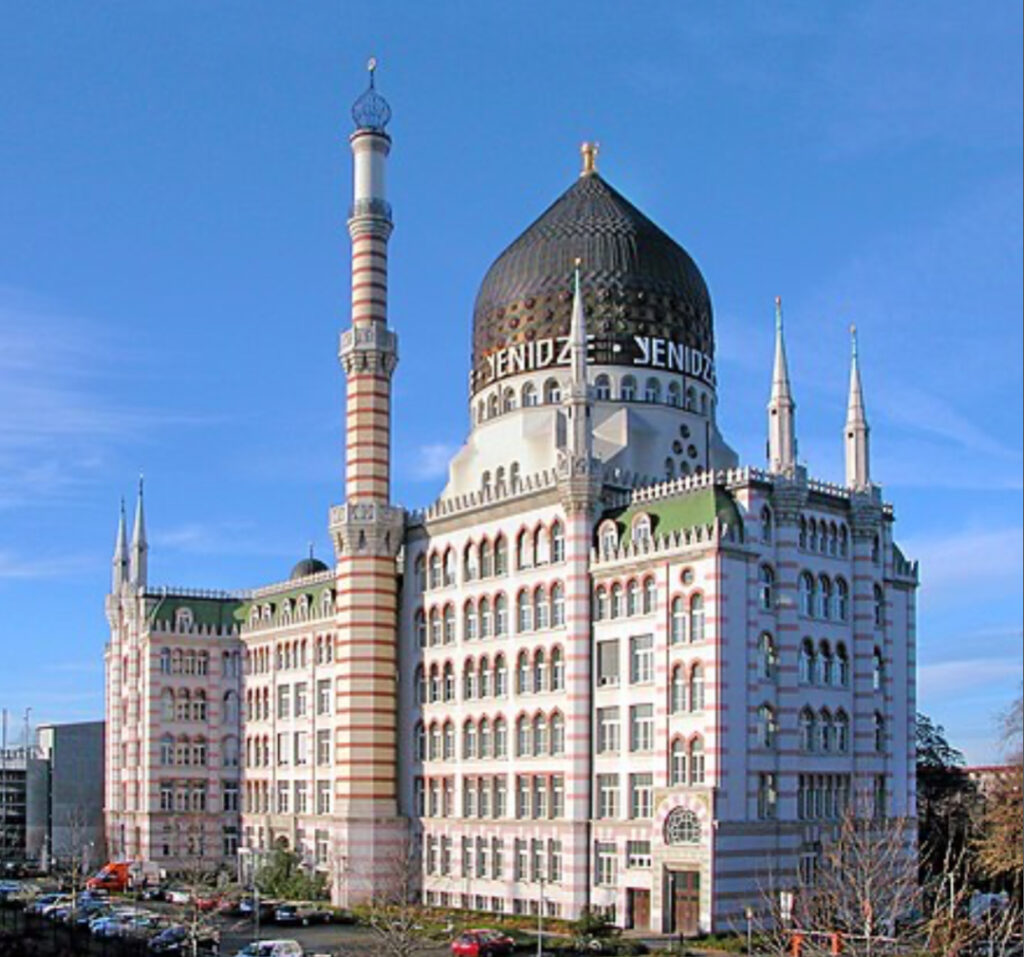
- Martin Luther Monument: Located near the Frauenkirche, honoring the Protestant Reformer.
Visiting Tips:
- Many of these sites are located within walking distance in the historic city center.
- Consider purchasing a Dresden City Card for discounts on admissions and public transportation.
- Guided tours are available for a more in-depth exploration of the city’s history and architecture.
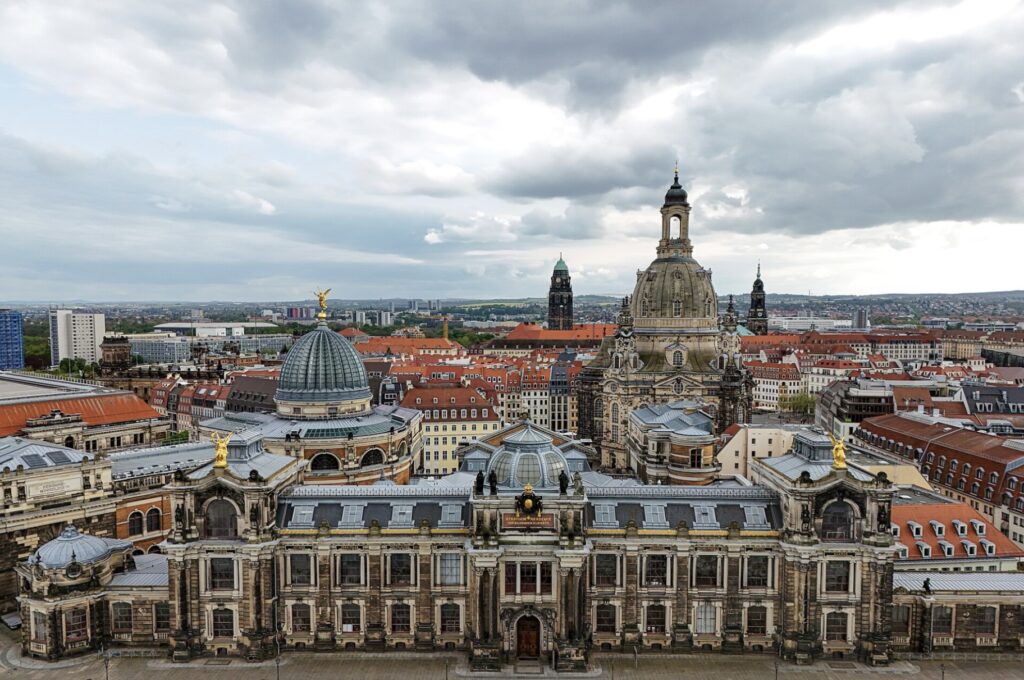
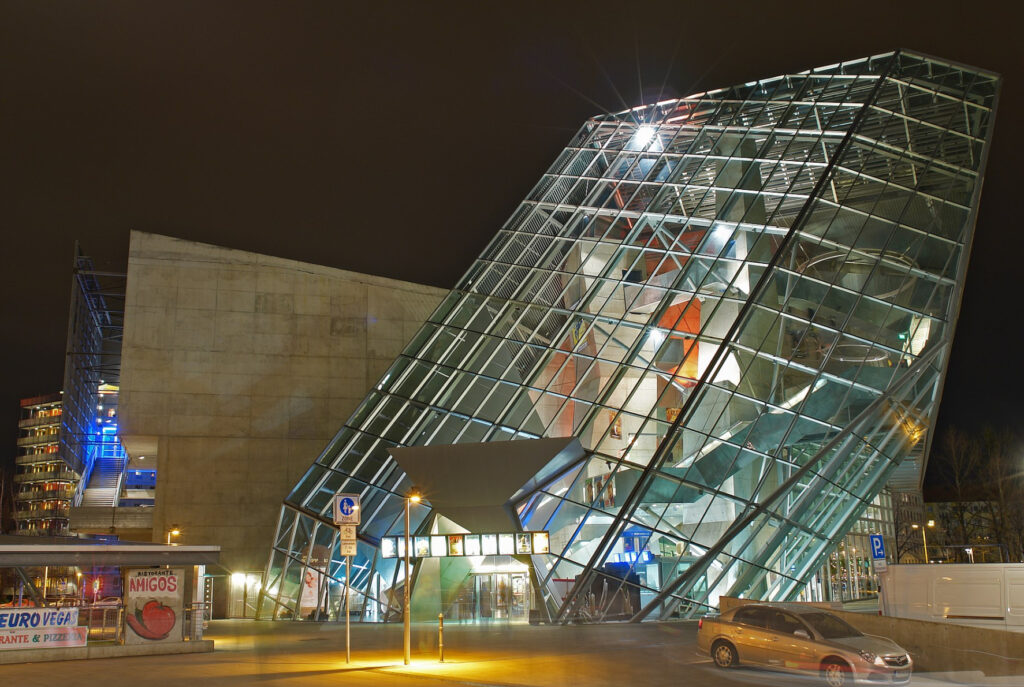
One-Day Dresden Itinerary with Local Food Specialties
Experience the best of Dresden’s historical landmarks and savor authentic Saxon cuisine with this carefully curated one-day itinerary.
Morning
8:30 AM – Breakfast at Café Schinkelwache
Start your day with a hearty breakfast at Café Schinkelwache, located near the Semperoper. Enjoy traditional German pastries like Butterhörnchen (buttery croissants) and a cup of freshly brewed coffee.
9:30 AM – Visit the Frauenkirche (Church of Our Lady)
- Description: A symbol of Dresden’s rebirth, the Frauenkirche is a stunning Baroque church reconstructed after World War II.
- Activity: Explore the interior and, if time permits, climb to the dome for panoramic views of the city.
10:30 AM – Stroll Along Brühl’s Terrace
- Description: Known as the “Balcony of Europe,” this elevated promenade offers beautiful views of the Elbe River.
- Activity: Walk along the terrace, admire the riverfront, and take photos of the historic architecture.
11:00 AM – See the Procession of Princes (Fürstenzug)
- Description: A 102-meter-long mural made from Meissen porcelain tiles, depicting Saxon rulers.
- Activity: Learn about Saxony’s history as you admire one of the world’s largest porcelain artworks.
11:30 AM – Explore Dresden Castle (Residenzschloss)
- Description: Former royal palace of the Saxon kings, now home to several museums.
- Activity: Visit the Green Vault to see an impressive collection of treasures and jewels.
Lunch
1:00 PM – Traditional Saxon Lunch at Pulverturm an der Frauenkirche
- Description: A restaurant located in a historic gunpowder tower near the Frauenkirche.
- Menu Highlights:
- Sauerbraten: Marinated roast beef with red cabbage and dumplings.
- Sächsische Kartoffelsuppe: Saxon potato soup with sausages.
- Dresdner Eierschecke: A layered cream cheese and custard cake for dessert.
Afternoon
2:30 PM – Visit the Zwinger Palace
- Description: A Baroque masterpiece housing world-class museums.
- Activity: Choose one museum to explore, such as the Old Masters Picture Gallery or the Porcelain Collection.
4:00 PM – Tour the Semperoper (Semper Opera House)
- Description: Renowned for its architecture and acoustics.
- Activity: Join a guided tour to learn about its history and marvel at the ornate interiors.
5:00 PM – Coffee Break at Café Coselpalais
- Description: An elegant café situated in a historic palace.
- Menu Highlights:
- Dresdner Stollen: A rich fruitcake traditionally enjoyed during the Christmas season.
- Eierschecke: A local cheesecake variant with a creamy custard layer.
Evening
6:00 PM – Cross to the Neustadt District
- Activity: Walk across the Augustus Bridge to Dresden Neustadt, the city’s vibrant artistic quarter.
6:30 PM – Explore the Kunsthofpassage
- Description: An artistic courtyard complex with creative façades and installations.
- Activity: Browse unique boutiques, galleries, and enjoy the eclectic atmosphere.
7:30 PM – Dinner at Wenzel Prager Bierstuben
- Description: A cozy restaurant offering Saxon and Bohemian specialties.
- Menu Highlights:
- Schweinebraten: Roasted pork with sauerkraut and dumplings.
- Meißner Fummel: A delicate pastry from nearby Meissen.
- Local Beers: Sample regional brews like Radeberger Pilsner.
9:00 PM – Evening Stroll or Elbe River Cruise
- Option 1: Take a leisurely walk along the Elbe River, enjoying the illuminated skyline.
- Option 2: Join an evening Elbe River cruise to see the city’s landmarks from the water (check seasonal availability).
Additional Tips
- Transportation: Most attractions are within walking distance. Alternatively, use Dresden’s efficient tram system.
- Tickets:
- Frauenkirche Dome Climb: Consider booking in advance, especially during peak seasons.
- Zwinger Palace and Museums: Purchase a combined ticket if planning to visit multiple exhibits.
- Language: While English is widely understood in tourist areas, learning a few basic German phrases can enhance your experience.

